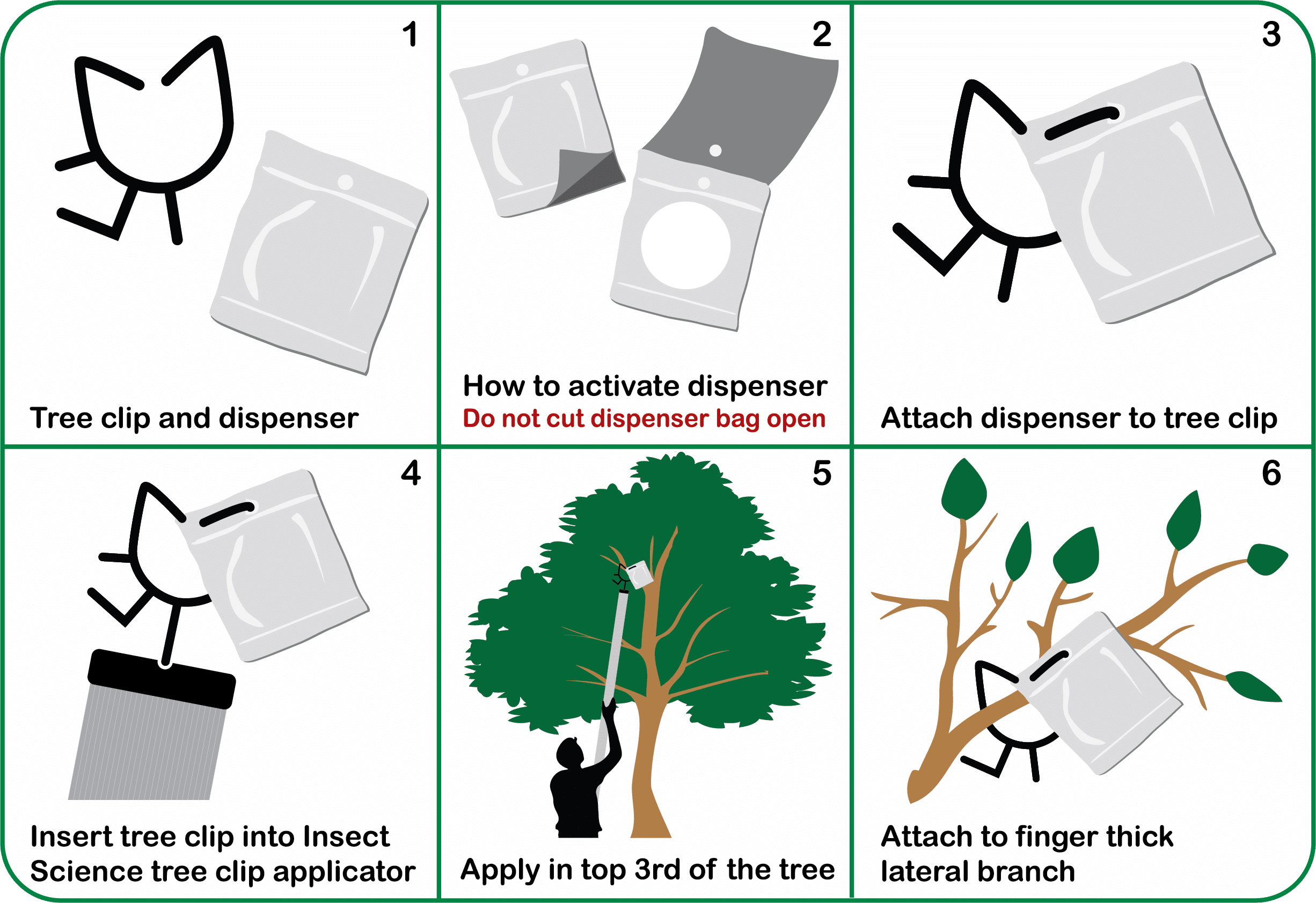
Mating disruption is a targeted, non-toxic, safe and environmentally friendly solution that leaves zero residue on crops or plants. Technology has enabled the development of pesticide-free pheromone-based products that proactively disrupt mating behaviour and reduce insect pest populations by preventing reproduction.

More detailed information on our pest-specific solutions can be found here:
Male moths find potential mates by following the trail of a scent (pheromone) emitted by the female of the same species. Mating disruption is used to prevent mating by saturating the atmosphere with pheromones released by dispensers. By releasing a large quantity of pheromone into the targeted area, male insects are confused and struggle to locate females, which emit pheromones at a lower concentration than the dispenser. Doing this for an extended period results in less mating and, in turn, fewer eggs and damage-causing larvae. Keeping the population under pressure over an extended period will eventually result in population control.
X-Mate uses passive dispensers, approved in South Africa. Application density will depend on the crop and insect being targeted.
The following guidelines should also be followed:

A molecule of the pheromone is heavier than a molecule of air, so gravity will naturally cause the pheromone to drift downwards. If your orchard is placed on a steep hill, the pheromone will move down the hill leaving the trees at the top exposed. For this reason, more dispensers should be placed at the top of steep inclines.
Observe the pheromone base traps located in the orchard treated with mating disruption and compare the number of captures with those obtained in traps located outside the area treated with mating disruption.
Note, however, that the absence of captures in a trap is not a guarantee that a particular orchard has not been infested. If the pheromone is not uniformly distributed in the orchard and certain conditions are present, the risk of mating will increase. Thus, in addition to monitoring the pheromone traps, sampling should be conducted to assess the damage in each generation. The samples should be collected both in orchards treated with mating disruption and in control orchards.